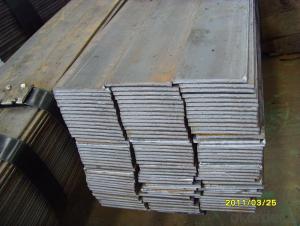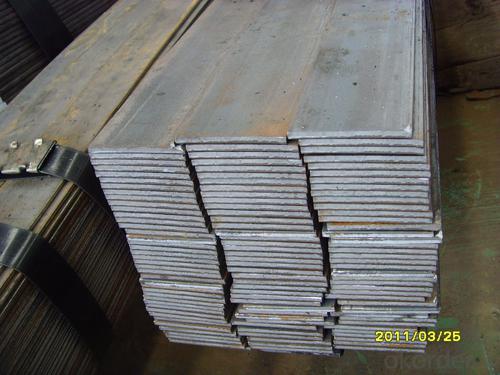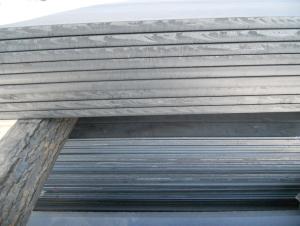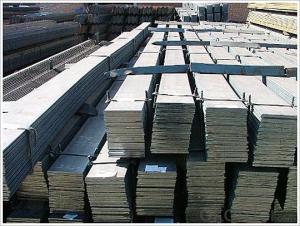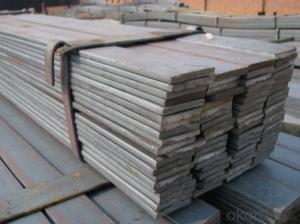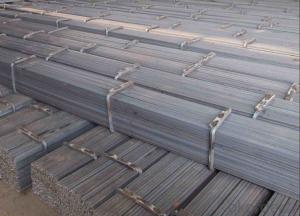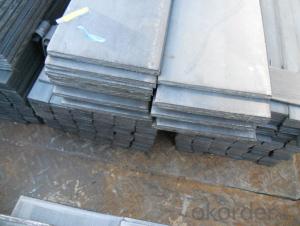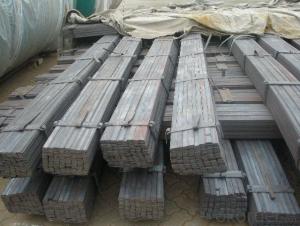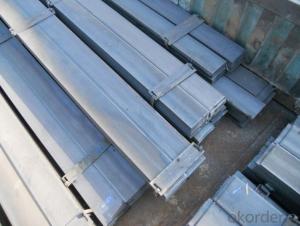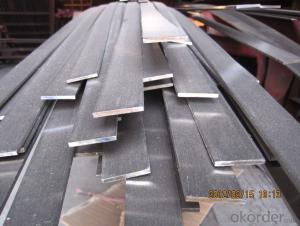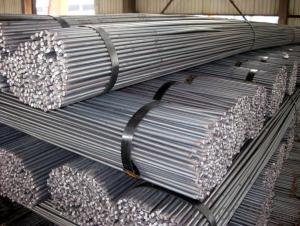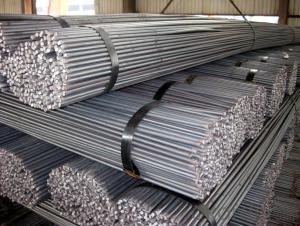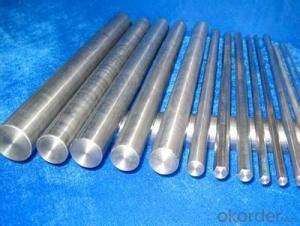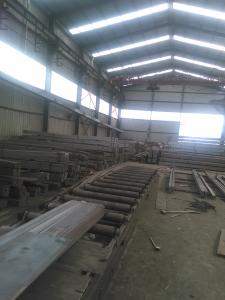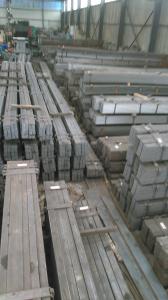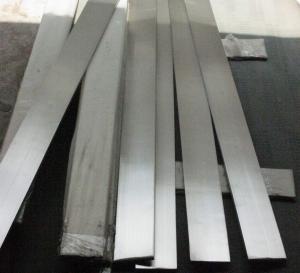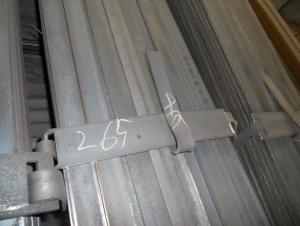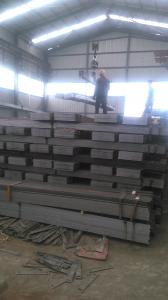Wide Flat Bar High Quality Q235 Hot Rolled 3MM-30MM
- Loading Port:
- Shanghai
- Payment Terms:
- TT or LC
- Min Order Qty:
- 25 m.t.
- Supply Capability:
- 10000 m.t./month
OKorder Service Pledge
OKorder Financial Service
You Might Also Like
Product Applications:
Wide Flat Bar High Quality Q235 Hot Rolled 3MM-30MM are ideal for structural applications and are widely used in the construction of buildings and bridges, and the manufacturing, petrochemical, and transportation industries.
Product Advantages:
OKorder's Wide Flat Bar High Quality Q235 Hot Rolled 3MM-30MM are durable, strong, and resist corrosion.
Main Product Features:
· Premium quality
· Prompt delivery & seaworthy packing (30 days after receiving deposit)
· Corrosion resistance
· Can be recycled and reused
· Mill test certification
· Professional Service
· Competitive pricing
Product Specifications:
Manufacture: Hot rolled
Grade: Q195 – 235
Certificates: ISO, SGS, BV, CIQ
Length: 6m – 12m, as per customer request
Packaging: Export packing, nude packing, bundled
Chinese Standard (H*W*T) | Weight (Kg/m) | 6m (pcs/ton) | Light I (H*W*T) | Weight (Kg/m) | 6m (pcs/ton) | Light II (H*W*T) | Weight (Kg/m) | 6M |
100*68*4.5 | 11.261 | 14.8 | 100*66*4.3 | 10.13 | 16.4 | 100*64*4 | 8.45 | 19.7 |
120*74*5.0 | 13.987 | 11.9 | 120*72*4.8 | 12.59 | 13.2 | 120*70*4.5 | 10.49 | 15.8 |
140*80*5.5 | 16.89 | 9.8 | 140*78*5.3 | 15.2 | 10.9 | 140*76*5 | 12.67 | 13.1 |
160*88*6 | 20.513 | 8.1 | 160*86*5.8 | 18.46 | 9 | 160*84*5.5 | 15.38 | 10.8 |
180*94*6.5 | 24.143 | 6.9 | 180*92*6.3 | 21.73 | 7.6 | 180*90*6 | 18.11 | 9.2 |
200*100*7 | 27.929 | 5.9 | 200*98*6.8 | 25.14 | 6.6 | 200*96*6.5 | 20.95 | 7.9 |
220*110*7.5 | 33.07 | 5 | 220*108*7.3 | 29.76 | 5.6 | 220*106*7 | 24.8 | 6.7 |
250*116*8 | 38.105 | 4.3 | 250*114*7.8 | 34.29 | 4.8 | 250*112*7.5 | 28.58 | 5.8 |
280*122*8.5 | 43.492 | 3.8 | 280*120*8.2 | 39.14 | 4.2 | 280*120*8 | 36.97 | 4.5 |
300*126*9 | 48.084 | 3.4 | 300*124*9.2 | 43.28 | 3.8 | 300*124*8.5 | 40.87 | 4 |
320*130*9.5 | 52.717 | 3.1 | 320*127*9.2 | 48.5 | 3.4 | |||
360*136*10 | 60.037 | 2.7 | 360*132*9.5 | 55.23 | 3 |
FAQ:
Q1: How do we guarantee the quality of our products?
A1: We have established an advanced quality management system which conducts strict quality tests at every step, from raw materials to the final product. At the same time, we provide extensive follow-up service assurances as required.
Q2: How soon can we receive the product after purchase?
A2: Within three days of placing an order, we will begin production. The specific shipping date is dependent upon international and government factors, but is typically 7 to 10 workdays.
Q3: What makes stainless steel stainless?
A3: Stainless steel must contain at least 10.5 % chromium. It is this element that reacts with the oxygen in the air to form a complex chrome-oxide surface layer that is invisible but strong enough to prevent further oxygen from "staining" (rusting) the surface. Higher levels of chromium and the addition of other alloying elements such as nickel and molybdenum enhance this surface layer and improve the corrosion resistance of the stainless material.
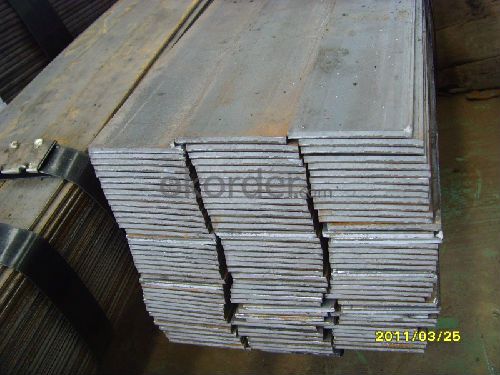
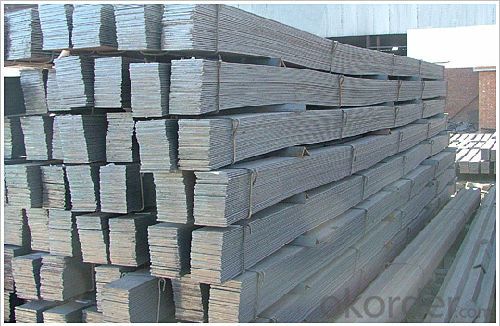
- Q: How do steel flat bars withstand heavy loads?
- Steel flat bars are specifically designed to withstand heavy loads due to their unique properties and construction. Firstly, steel is an incredibly strong and durable material. It has a high tensile strength, meaning it can withstand large amounts of force or pressure without breaking or deforming. This inherent strength makes steel flat bars an ideal choice for supporting heavy loads. Additionally, the flat shape of the bars provides increased stability and load-bearing capacity. The wide surface area of the flat bar allows for even distribution of the load, preventing concentrated stress points that could cause failure or deformation. Moreover, steel flat bars are often reinforced or tempered through various manufacturing processes. For example, they may be hot-rolled, which involves heating the steel to high temperatures and then rapidly cooling it to increase its strength and hardness. This process helps to further enhance the load-bearing capabilities of the flat bars. Furthermore, steel flat bars can be fabricated to meet specific load requirements. They can be cut, bent, or welded to create customized shapes and sizes that are optimized for the intended load. This versatility allows for the creation of structural elements that are specifically engineered to withstand heavy loads. Overall, the combination of steel's inherent strength, the wide surface area of the flat shape, reinforcement processes, and customization options make steel flat bars highly capable of withstanding heavy loads. They are a reliable and commonly used choice in construction, manufacturing, and other industries where robust load-bearing capabilities are necessary.
- Q: Are steel flat bars suitable for outdoor signage or displays?
- Yes, steel flat bars are suitable for outdoor signage or displays. Steel is a durable and weather-resistant material that can withstand outdoor conditions such as rain, wind, and sunlight. Additionally, steel flat bars provide a sturdy base for mounting signs or displays, making them a reliable choice for outdoor applications.
- Q: Can steel flat bars be used for creating supports or brackets?
- Yes, steel flat bars can be used for creating supports or brackets. Steel flat bars are commonly used for their strength and durability, making them ideal for supporting heavy loads or providing structural stability. They can be easily shaped or welded to create custom brackets or supports for various applications, such as shelves, furniture, machinery, or construction projects. Steel flat bars are available in different sizes and thicknesses, allowing for versatility in design and application.
- Q: What are the common factors affecting the price of steel flat bars?
- There are several common factors that can affect the price of steel flat bars. 1. Raw material costs: The cost of the raw materials used to produce steel, such as iron ore, coal, and scrap metal, can greatly impact the price of steel flat bars. Fluctuations in these raw material prices can lead to significant changes in the overall cost of production and, subsequently, the price of steel flat bars. 2. Supply and demand: Like any other commodity, the supply and demand dynamics play a crucial role in determining the price of steel flat bars. If there is a high demand for steel flat bars and limited supply, the price is likely to increase. Conversely, if the supply exceeds the demand, prices may decrease. 3. Manufacturing and processing costs: The cost of manufacturing and processing steel flat bars can also impact their price. This includes expenses related to labor, energy, transportation, and other production-related costs. Any changes in these costs, such as increased wages or electricity prices, can affect the final price of steel flat bars. 4. Market competition: The level of competition within the steel industry can influence the price of steel flat bars. When there are many suppliers offering similar products, the market becomes more competitive, which can lead to lower prices. Conversely, if there are fewer competitors, prices may increase. 5. Government regulations and trade policies: Government regulations and trade policies, such as import tariffs or quotas, can have a significant impact on the price of steel flat bars. These policies can restrict or promote the import and export of steel, which can affect the overall supply and demand dynamics and subsequently influence prices. 6. Economic conditions: The overall state of the economy can also affect the price of steel flat bars. During periods of economic growth and high construction activity, the demand for steel flat bars tends to increase, leading to higher prices. Conversely, during economic downturns or recessions, demand may decrease, resulting in lower prices. It's important to note that the combination of these factors can vary depending on the specific market and region. Additionally, external factors such as natural disasters, geopolitical events, and currency exchange rates can also impact the price of steel flat bars.
- Q: Are steel flat bars available in different lengths and widths?
- Yes, steel flat bars are available in different lengths and widths.
- Q: How are steel flat bars used in the fabrication of furniture?
- Due to their versatility and strength, steel flat bars are commonly employed in furniture fabrication. These bars, typically crafted from carbon steel, possess exceptional durability and stability. The primary application of steel flat bars in furniture fabrication lies in the creation of robust frames and structures. By cutting and welding these bars together, furniture pieces like tables, chairs, and shelving units can be constructed with a sturdy skeleton. The flat and straight shape of steel flat bars allows for precise and clean lines during the construction process. Furthermore, steel flat bars serve to reinforce and support various components of furniture. They can be utilized as braces or brackets, offering additional stability and preventing bending or warping over time. Moreover, these bars can be bent or shaped to fit specific design requirements, making them highly adaptable for diverse furniture styles. In addition to their structural advantages, steel flat bars also contribute to the aesthetic appeal of furniture. They can be incorporated as decorative accents or trim, elevating the overall appearance and ambiance of the piece. Furthermore, steel flat bars can be finished in various ways, such as powder coating or painting, to match the desired color scheme or design theme. In summary, steel flat bars play an indispensable role in furniture fabrication, providing strength, stability, and versatility. Whether employed as a structural element or a decorative feature, these bars contribute to the overall durability and aesthetic allure of furniture pieces.
- Q: Are steel flat bars used in the construction of bridges?
- Yes, steel flat bars are commonly used in the construction of bridges. They provide structural support and stability, and are often used for components such as beams, braces, and reinforcement.
- Q: Can steel flat bars be used for making shelving or storage racks?
- Indeed, shelving or storage racks can be constructed using steel flat bars. These bars possess remarkable strength and durability, rendering them ideal for withstanding hefty loads and ensuring stability in shelving units or storage racks. Their capacity to be effortlessly cut and welded enables the creation of customized sizes and shapes, thus granting flexibility in design. Furthermore, steel flat bars exude a sleek and contemporary aesthetic, making them suitable for a wide array of storage settings, including warehouses, garages, and even residential spaces. In summary, steel flat bars emerge as a dependable and adaptable option for the construction of shelving or storage racks.
- Q: What are the different surface treatments available for steel flat bars to enhance aesthetics?
- Steel flat bars have several surface treatments available that can improve their appearance and aesthetics. Some of the most common treatments include: 1. Polishing: By grinding and buffing the steel, a smooth and glossy surface is created, enhancing its shine and reflective properties for a sleek and sophisticated look. 2. Brushing: This treatment involves using abrasive materials like wire brushes to create fine lines on the steel's surface, giving it a textured and decorative appearance that adds depth and character. 3. Powder coating: Electrostatically applying a dry powder to the steel surface and then heating it creates a smooth and durable finish. This treatment not only enhances aesthetics with a wide range of colors and finishes but also improves resistance to corrosion, chemicals, and UV rays. 4. Galvanizing: Applying a protective layer of zinc to the steel surface enhances aesthetics with a shiny and metallic appearance while providing excellent corrosion resistance, making it suitable for outdoor applications. 5. Anodizing: An electrochemical process creates a protective oxide layer on the steel surface, enhancing aesthetics with a variety of colors and finishes, as well as improved resistance to corrosion, abrasion, and weathering. 6. Plating: Applying a thin layer of metal, such as chrome or nickel, onto the steel surface enhances aesthetics with a shiny and reflective appearance, while also providing additional protection against corrosion and wear. In conclusion, these surface treatments offer various options to enhance the aesthetics of steel flat bars, making them suitable for a wide range of applications where appearance is crucial, including architectural designs, interior decoration, furniture, and the automotive industry.
- Q: Can steel flat bars be used in corrosive environments?
- The performance of steel flat bars in corrosive environments depends on the type of steel and the severity of the corrosive environment. Steel types like stainless steel or weathering steel, which have inherent corrosion resistance, are often chosen for applications where corrosion is a concern. These steel types contain alloying elements that create a protective layer on the surface, preventing or slowing down corrosion. On the other hand, carbon steel flat bars are more prone to corrosion in corrosive environments. However, they can still be used if proper precautions are taken. One common precaution is to apply a protective coating such as paint or zinc galvanization, which acts as a barrier between the steel and the corrosive elements. Regular maintenance and inspection are also important to identify and address any signs of corrosion. To ensure the performance and longevity of steel flat bars in corrosive environments, it is important to consider the specific type of steel and implement necessary protective measures.
Send your message to us
Wide Flat Bar High Quality Q235 Hot Rolled 3MM-30MM
- Loading Port:
- Shanghai
- Payment Terms:
- TT or LC
- Min Order Qty:
- 25 m.t.
- Supply Capability:
- 10000 m.t./month
OKorder Service Pledge
OKorder Financial Service
Similar products
Hot products
Hot Searches
Related keywords
